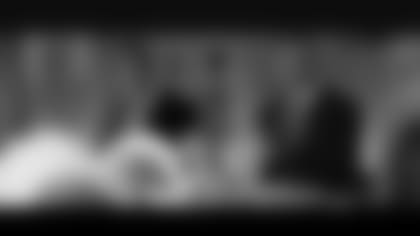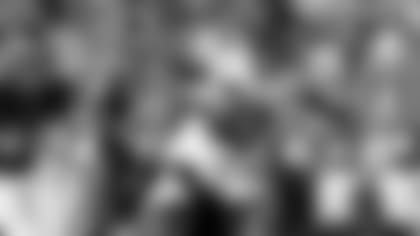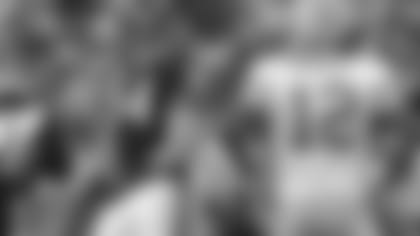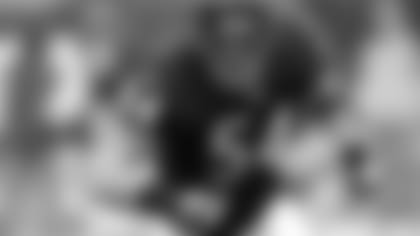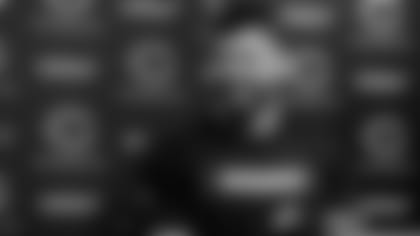Senior writer Larry Mayer ranks the 1975 draft as the fourth best class in Bears history:
He played at tiny Jackson State University, but Walter Payton was hardly an unknown commodity when he was chosen by the Bears with the fourth pick in the 1975 draft.
Payton was a two-time first-team All-American who set the NCAA scoring record with 464 points, established nine school records and received votes for the Heisman Trophy.
 |
| Walter Payton was selected with the fourth overall pick in the 1975 NFL Draft. |
Maybe so, but few imagined that Payton would become the NFL's all-time leading rusher and arguably the greatest player in Bears history. Then again, the man they called "Sweetness" was seemingly convinced that he would enjoy a special career in the Windy City.
"When I get through with Chicago, they'll be loving me," Payton said the day he was drafted.
The Bears selected eight other players in 1975 who would eventually start: DE Mike Hartenstine (second round), CB Virgil Livers (fourth), G Revie Sorey (fifth), QB Bob Avellini (sixth), LB Tom Hicks (sixth), DT Roger Stillwell (ninth), S Doug Plank (12th) and FB Roland Harper (17th).
But to me, the selection of Payton is the major reason that the 1975 draft is the fourth best in Bears history.
"We certainly did one thing," legendary Bears owner George Halas said at the time. "We helped our needs. I'm so enthused with the whole thing. I think it's the finest Bear draft in 10 years."
Halas sat in on the two-day session, but was primarily a spectator. The draft was orchestrated by general manager Jim Finks, who joined Papa Bear in the Pro Football Hall of Fame in 1995.
Heading into the draft, running back was considered the Bears' biggest need. Ken Grandberry had led the team in rushing in 1974 with just 475 yards and two touchdowns on 144 carries.
Many scouts felt that Texas A&I's Don Hardeman was the best runner available. But Hardeman was selected by the Houston Oilers with the 15th pick and rushed for only 1,460 yards and 11 touchdowns on 397 carries in five NFL seasons with the Oilers and Baltimore Colts.
The three players chosen ahead of Payton were quarterback Steve Bartkowski (Atlanta Falcons), defensive tackle Randy White (Dallas Cowboys) and guard Ken Huff (Colts).
The only Hall of Famers from the 1975 draft are Payton, White and defensive end Fred Dean, who was selected by the San Diego Chargers in the second round (33rd overall).
The Bears insisted that they would have selected Payton if they had the No. 1 pick. When the Colts chose Huff, Pardee revealed that "a nice cheer went up" in Chicago's draft room.
"We've been sweating it out all night," he said. "What happened is what we were hoping for. Had we been in Atlanta's spot, we'd have chosen Walter Payton. We thought that much of him."
The next day, the Chicago Tribune speculated that "Payton's addition raised immediate doubt about the future of (incumbent running back) Carl Garrett with the Bears."
Other noteworthy choices in the first round of the 1975 draft were LB Robert Brazile (6th to the Oilers), TE Russ Francis (16th to the New England Patriots), CB Louie Wright (17th to the Denver Broncos) and LB Thomas "Hollywood" Henderson (18th to the Dallas Cowboys).
Finks landed two more offensive starters by making draft-day trades.
The Bears general manager dealt third- and seventh-round selections to the Colts for the rights to tight end Greg Latta, Baltimore's 1974 first-round pick who had played his rookie season for Pardee in the World Football League with the Florida Blazers.
Finks sent another seventh-round choice to the Colts for the rights to guard Noah Jackson, who had played out his option with the Toronto Argonauts in the Canadian Football League.



